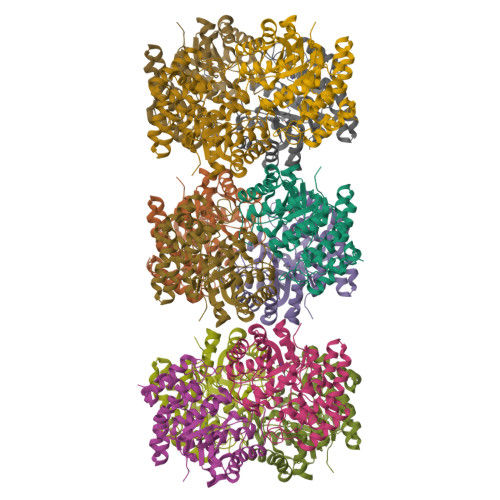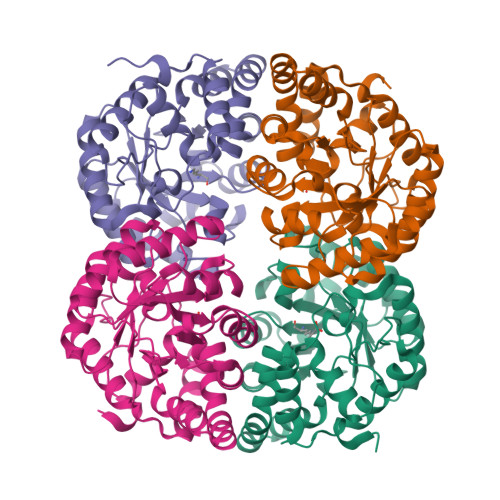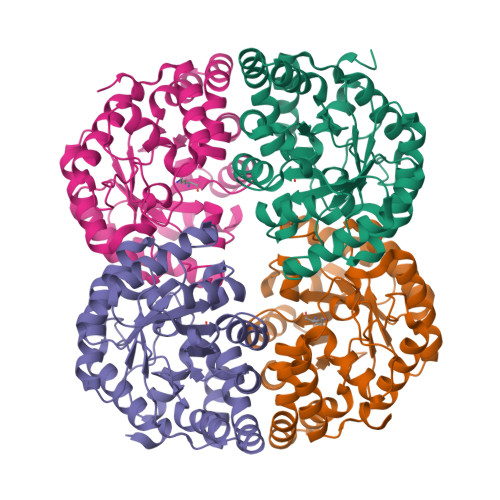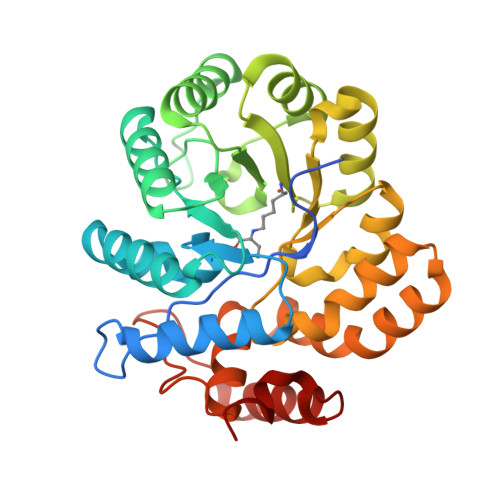Biochemical and Structural Characterization of l-2-Keto-3-deoxyarabinonate Dehydratase: A Unique Catalytic Mechanism in the Class I Aldolase Protein Superfamily.
Watanabe, S., Watanabe, Y., Nobuchi, R., Ono, A.(2020) Biochemistry 59: 2962-2973
- PubMed: 32697085
- DOI: https://doi.org/10.1021/acs.biochem.0c00515
- Primary Citation of Related Structures:
7C0C, 7C0D, 7C0E - PubMed Abstract:
l-2-Keto-3-deoxyarabinonate (l-KDA) dehydratase (AraD) catalyzes the hydration of l-KDA to α-ketoglutaric semialdehyde in the nonphosphorylative l-arabinose pathway from bacteria and belongs to the dihydrodipicolinate synthase (DHDPS)/ N -acetylneuraminate lyase (NAL) protein superfamily. All members of this superfamily, including several aldolases for l-KDA, share a common catalytic mechanism of retro-aldol fission, in which a lysine residue forms a Schiff base with the carbonyl C2 atom of the substrate, followed by proton abstraction of the substrate by a tyrosine residue as the base catalyst. Only AraD possesses a glutamine residue instead of this active site tyrosine, suggesting its involvement in catalysis. We herein determined the crystal structures of AraD from the nitrogen-fixing bacterium Azospirillum brasilense and AraD in complex with β-hydroxypyruvate and 2-oxobutyrate, two substrate analogues, at resolutions of 1.9, 1.6, and 2.2 Å, respectively. In both of the complexed structures, the ε-nitrogen of the conserved Lys171 was covalently linked to the carbonyl C2 atom of the ligand, which was consistent with the Schiff base intermediate form, similar to other DHDPS/NAL members. A site-directed mutagenic study revealed that Glu173 and Glu200 played important roles as base catalysts, whereas Gln143 was not absolutely essential. The abstraction of one of the C3 protons of the substrate (but not the O4 hydroxyl) by Glu173 was similar to that by the (conserved) tyrosine residues in the two DHDPS/NAL members that produce α-ketoglutaric semialdehyde (d-5-keto-4-deoxygalactarate dehydratase and Δ 1 -pyrroline-4-hydroxy-2-carboxylate deaminase), indicating that these enzymes evolved convergently despite similarities in the overall reaction.
Organizational Affiliation:
Department of Bioscience, Graduate School of Agriculture, Ehime University, 3-5-7 Tarumi, Matsuyama, Ehime 790-8566, Japan.





















